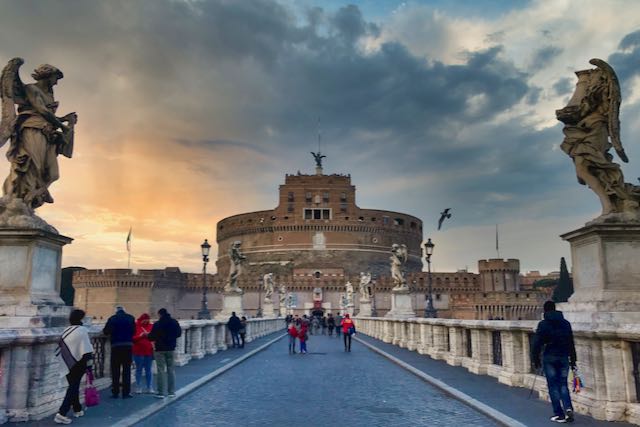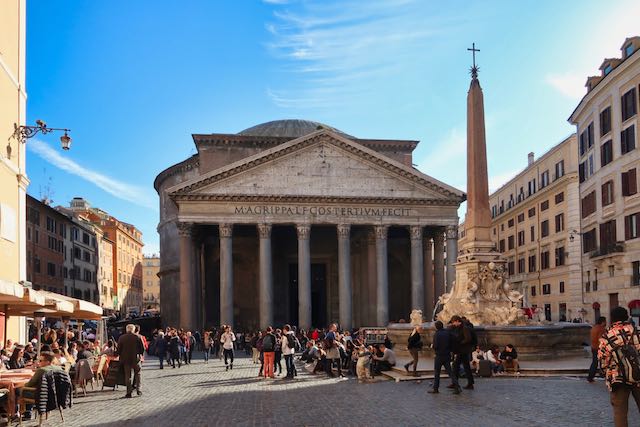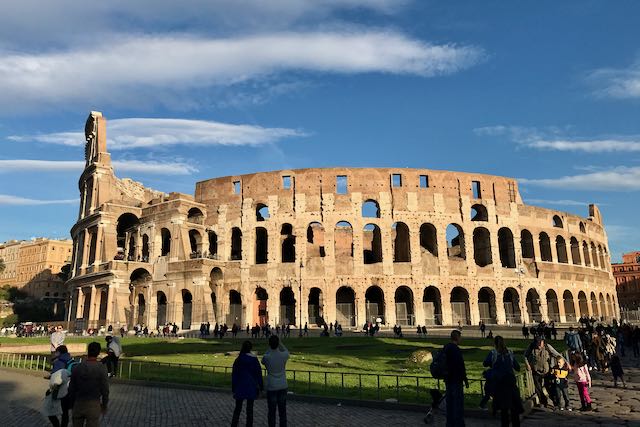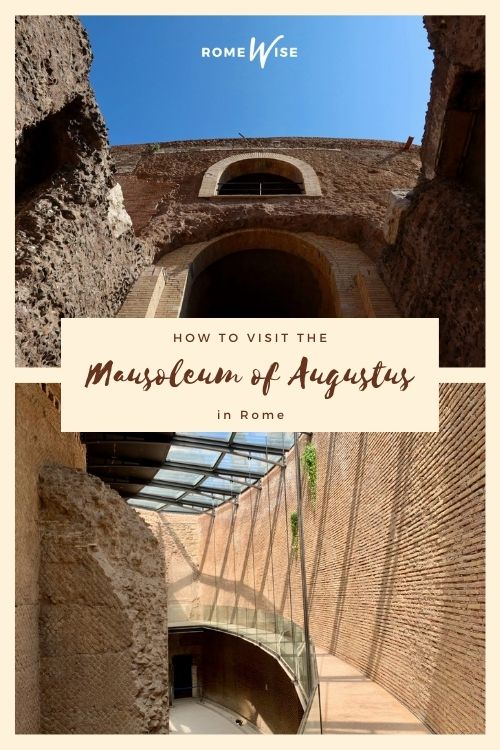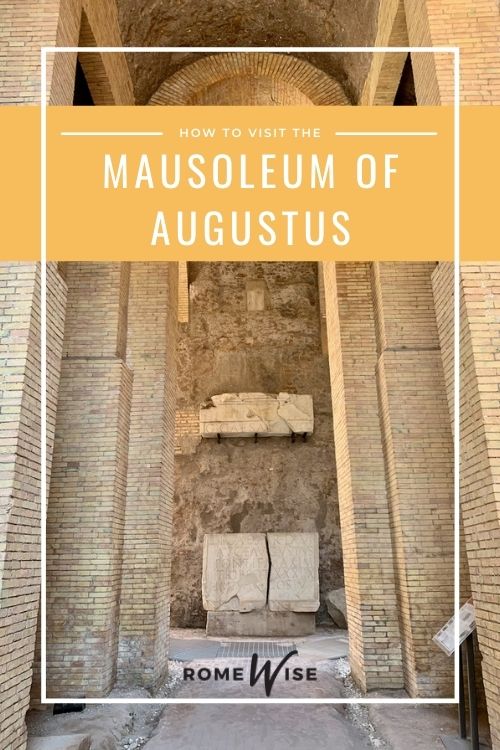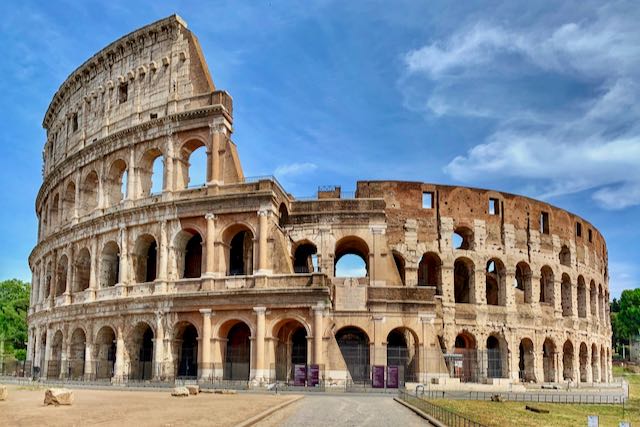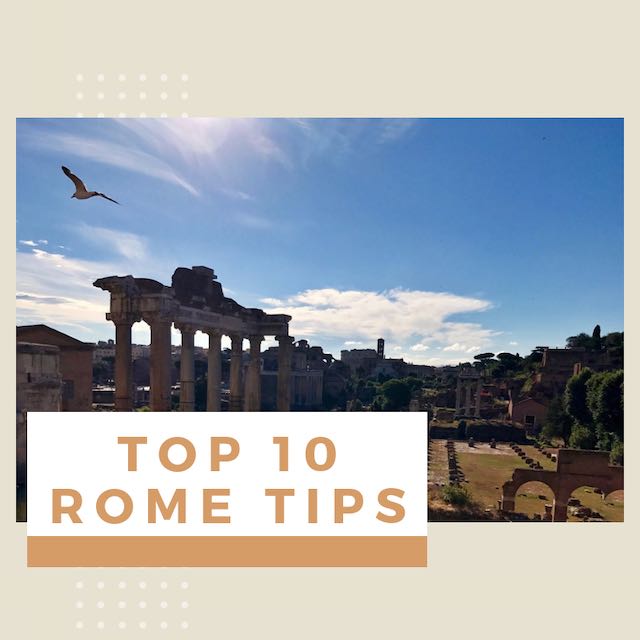- Sign up & get a FREE ebook Subscribe NOW!
- Romewise Home Page
- What to Do in Rome
- Mausoleum of Augustus
The Mausoleum of Augustus - How to visit the largest round tomb in the world
Can you imagine seeing the Mausoleum of Augustus when it was first built?
How enormous, how imposing it must have been.
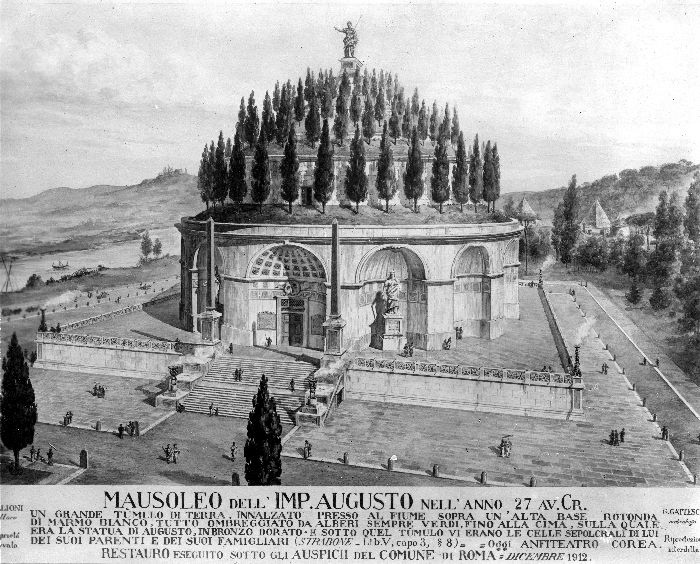 Print showing what the emperor's tomb must have looked like in the time of Augustus.
Print showing what the emperor's tomb must have looked like in the time of Augustus.The tomb of Rome's first emperor, Octavian Augustus, may be considered one of the most important monuments from ancient Rome.
Sadly, it fell to ruin and was unvisitable for years, but that has finally changed, and now, we can all visit this site.
The Mausoleum of Augustus - Facts, what's inside, how to visit it
Rome's first emperor famously said, "I found Rome a city of bricks and left it a city of marble."
Whether or not it's true, his mark on Rome and on the Roman empire cannot be overstated.
And to be able to visit his final resting place is very special.
So you may want to know just a bit about what it looked like, who was buried there, and how it went from imperial tomb to a fortress, a garden, a bull-fighting ring, a symphony hall, and finally, how it came back to us as Augustus' mausoleum.
On this page you'll find:
- What is the Mausoleum of Augustus?
- Mausoleum of Augustus facts and brief history
- What did Augustus' mausoleum look like?
- Who was buried in the Mausoleum of Augustus?
- Restoration of the Mausoleum of Augustus
- What's on the inside of Augustus' mausoleum?
- Opening Hours
- How to get tickets
What is the Mausoleum of Augustus?
Rome’s first emperor, Octavian Augustus, began construction of what would become his mausoleum in 28 BCE, not long after he’d won the Battle of Actium, in which he defeated Anthony and Cleopatra.
Augustus may have been inspired by his visit to the tomb of Alexander the Great in Alexandria.
We don’t know what that tomb looks like or even exactly where it is, but at the time, it must have made a strong impression on young Octavian.
Another source of inspiration for Augustus may also have been the Mausoleum of Halicarnassus, the tomb of the satrap of Caria, Maussolus (from which we get the word mausoleum.)
Built in the Campo Marzio/Campus Martius, or Field of Mars, not far from the Tiber River, Augustus’ mausoleum was meant to be a tomb for his family, close confidants, and most of the Julio-Claudio dynasty.
The mausoleum faced directly toward the entry of the Pantheon.
Even if they were some distance apart, there was a corridor linking the two.
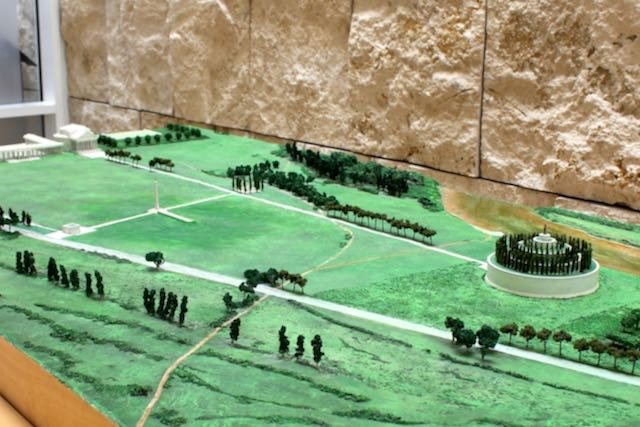 This plastic model inside the Ara Pacis museum shows what the Field of Mars looked like when Augustus was emperor. The entry to his mausoleum directly faces the entry to the Pantheon.
This plastic model inside the Ara Pacis museum shows what the Field of Mars looked like when Augustus was emperor. The entry to his mausoleum directly faces the entry to the Pantheon.The mausoleum was actively used for burials until 217 CE.
As other emperors, like Hadrian, made monumental tombs for their dynasties, Augustus’ tomb lost importance.
Mausoleum of Augustus facts and brief history
After the fall of the (Western) Roman Empire in 476 CE, Rome fairly well emptied out.
There was a lack of clean water, and the city was pretty unliveable.
There was no push to preserve any buildings or monuments, even important ones such as the Mausoleum of Augustus.
Disclosure: If you make a purchase through a link on this page, I may receive a small commission - at no extra cost to you. Thank you for supporting my site!
Middle Ages
In the early Middle Ages, the mausoleum had degraded to the extent that it was just another old tomb, abandoned and overgrown with plants and trees.
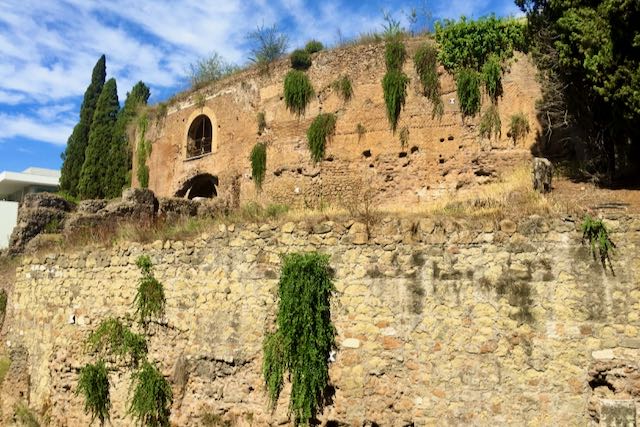 The Mausoleum of Augustus in 2016. A restoration had long been overdue.
The Mausoleum of Augustus in 2016. A restoration had long been overdue.The Romans referred to the hilly tomb as the Mons Augustus.
By the 12th century, Augustus’ tomb, like Hadrian’s tomb across the Tiber, had been converted into a fortress.
For a small time it was occupied by the powerful Colonna family.
Renaissance
For the next several hundred years, different powerful Roman families took control over the monument.
In the 16th century, the Soderini family purchased the property and created a hanging garden inside the top crater.
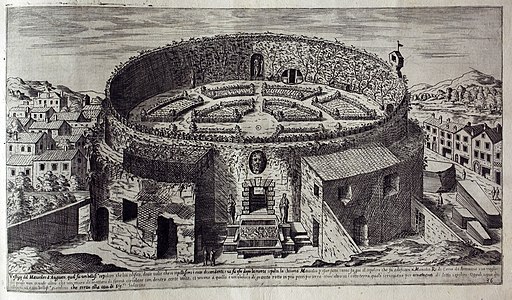 In this 16th century engraving by Etienne Dupérac, you can imagine how the top crater of the Mausoleum of Augustus was converted to a hanging garden by the Soderini family.
In this 16th century engraving by Etienne Dupérac, you can imagine how the top crater of the Mausoleum of Augustus was converted to a hanging garden by the Soderini family.Also in the 16th century, Pope Leo X (Medici) did some urban planning and completely changed the layout of the area where the Mausoleum stands.
To link Santa Maria del Popolo to an area with important Medici properties (Palazzo Medici Lante, Palazzo Madama and Palazzo di Fiorenza), the Pope ordered the creation of the Via Leonina, which was carried out by Raphael and Antonio da Sangallo.
The street later became known as via di Ripetta, named for the Porta di Ripetta on the Tiber.
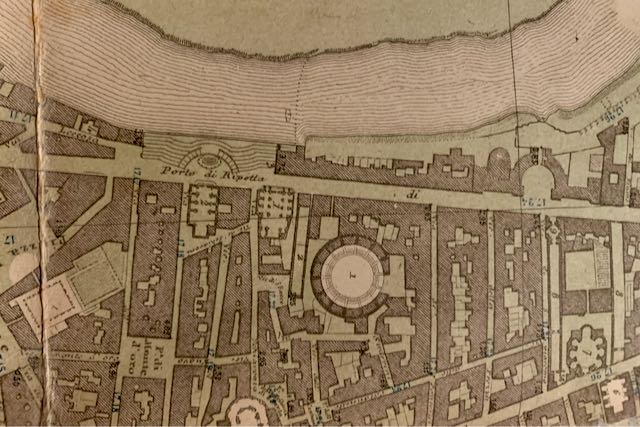 In this map of Rome from the 1800s, you can see how the modern city of Rome was built up around the Mausoleum of Augustus.
In this map of Rome from the 1800s, you can see how the modern city of Rome was built up around the Mausoleum of Augustus.18th, 19th and 20th centuries
In the 18th century, the mausoleum was acquired by Portuguese Marquis Benedetto Correa de Sylva, who transformed the space into a sort of bullfighting ring.
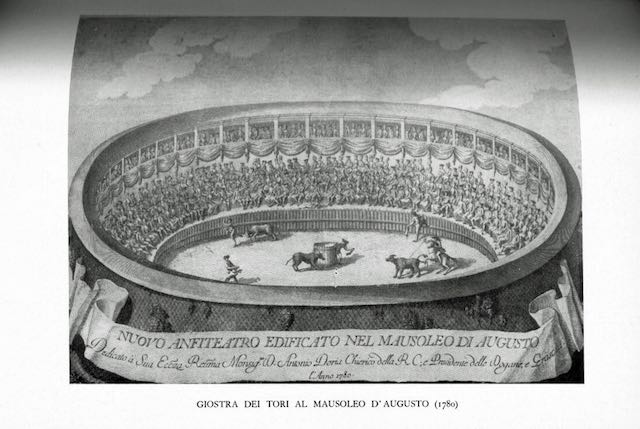 Augustus' mausoleum was even used as a bullfighting ring. It was called the "Giostra dei tori".
Augustus' mausoleum was even used as a bullfighting ring. It was called the "Giostra dei tori".In 1802, the mausoleum became property of the Papal States, and finally in 1873, it became Crown Property of the Kingdom of Italy.
In 1907, the inner portion of the monument was converted into a concert hall, known as the Augusteo. It seated around 3,500 people.
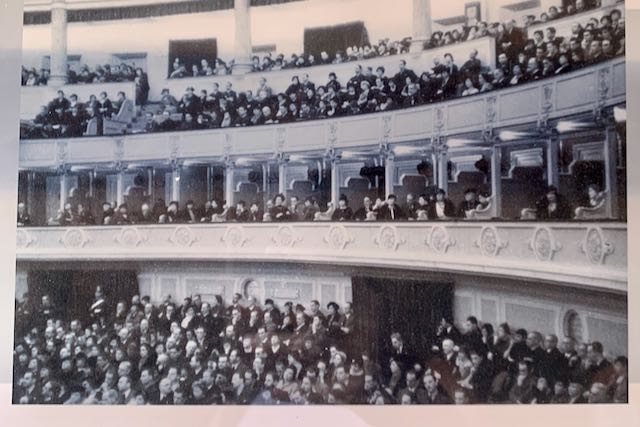 It seems hard to imagine today but at one time, the final resting place of Rome's first emperor acted as an auditorium and concert hall.
It seems hard to imagine today but at one time, the final resting place of Rome's first emperor acted as an auditorium and concert hall.In 1936, fascist dictator Benito Mussolini closed the mausoleum and ordered that it be restored to an archeological site.
Mussolini in some ways saw himself as the “Augustus” of the new age, and he may have thought that the mausoleum would be a good resting place for himself.
Obviously that's not how things turned out.
What did Augustus' mausoleum look like?
We don’t know exactly what the Mausoleum of Augustus looked like, but we have a pretty good idea.
This is in large part thanks to writings by Strabo of Amasya, (63/64 BCE - 24 CE), a Greek geographer of the time who saw the monument and wrote about it in his book, Geography.
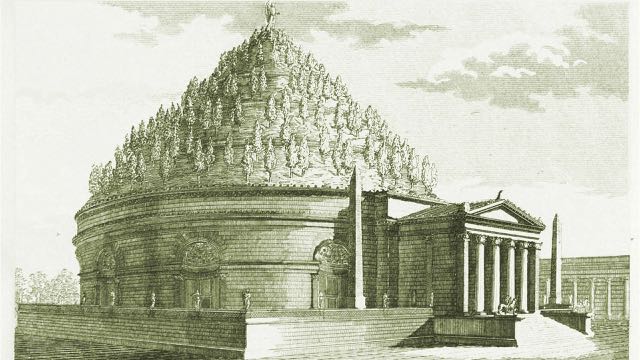 Augustus' mausoleum probably looked something like a cross between an Etruscan tomb and a Roman temple.
Augustus' mausoleum probably looked something like a cross between an Etruscan tomb and a Roman temple.Strabo travelled all across the Roman Empire, including to the British Isles, and to other far-flung locales such as Africa and Asia Minor.
His book Geography is a rich and detailed work covering socio-economics, politics, anthropology, and geography.
His is the only work of its kind that sheds light on both Greek and Roman cultures and geographies during the reign of Augustus.
Strabo described the monument as looking like a hill or mound topped with and surrounded by evergreen (cypress) trees.
After his visit to Rome in 7 BCE he described a golden (bronze) statue of Augustus on top of it all.
This statue was likely the model for the marble statue also made in Augustus’ lifetime, which we can see today in the Vatican Museums.
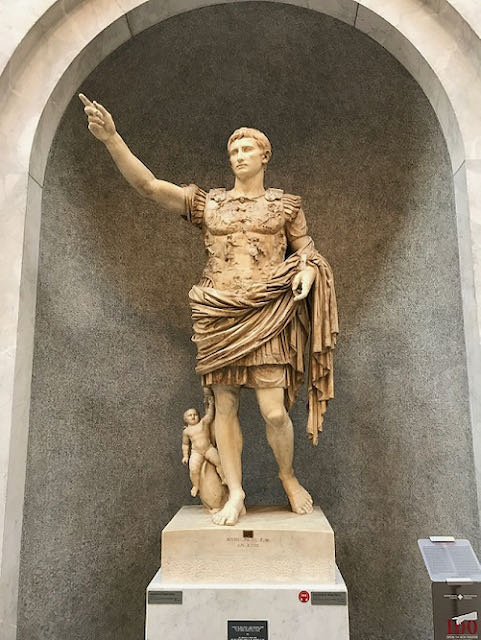 One of the most astounding finds from Ancient Rome is this nearly intact statue of Augustus, today in the Vatican Museums.
One of the most astounding finds from Ancient Rome is this nearly intact statue of Augustus, today in the Vatican Museums.Aside from the statue at the top, this shape sounds a lot like the tumuli used by the Etruscans who were here long before Rome was founded:
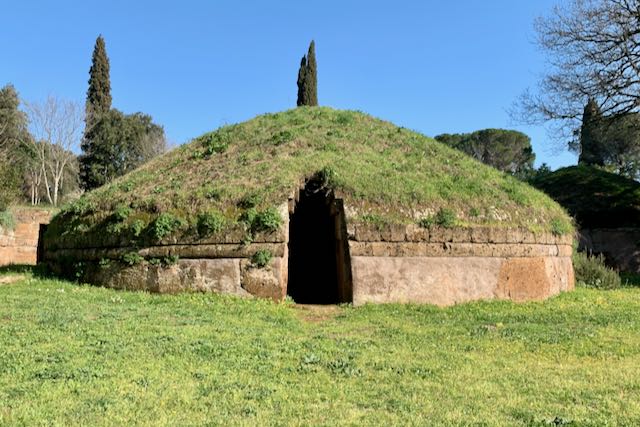 An Etruscan tomb at Cerveteri, not far from Rome. Etruscan tombs, called "tumuli" must have been some inspiration for the tomb of Rome's first emperor.
An Etruscan tomb at Cerveteri, not far from Rome. Etruscan tombs, called "tumuli" must have been some inspiration for the tomb of Rome's first emperor.Even today we can see that the mausoleum was circular.
It was composed of 3 concentric rings around an inner cylinder.
The whole thing would have been about 25 meters thick!
A corridor (dromos) ran from the entryway into the core of the mausoleum.
The innermost cylinder had three niches where urns holding the remains of the imperial family were kept.
Inside the inner cylinder there is a small square-shaped chamber, which you can peer into when you visit.
This is most likely where Augustus’ ashes were interred.
The walls of the mausoleum were made of brick, filled in with tuff stone and concrete, and then effaced with travertine, the stone we have most abundantly near Rome, and the same stone that makes up the structure of the Colosseum.
Next to the monument stood two bronze tablets inscribed with Augustus’ Res Gestae Divi Augusti, a list of the emperor’s accomplishments and victories.
You can see the text transcribed on the wall of the nearby Ara Pacis Museum.
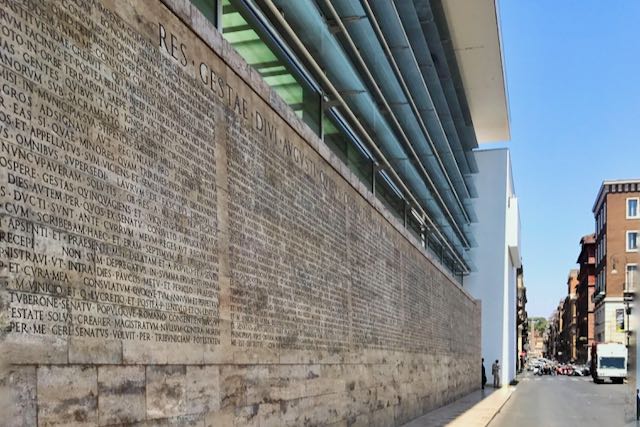 The museum of the Ara Pacis is just next to the Mausoleum of Augustus, and here you can read his "Res Gestae Divi Augusti", which is a testament to his accomplishments as emperor.
The museum of the Ara Pacis is just next to the Mausoleum of Augustus, and here you can read his "Res Gestae Divi Augusti", which is a testament to his accomplishments as emperor.There were two pink granite obelisks in front of the monument, on either side of the entryway.
These are 2 out of 5 ancient obelisks in Rome that were made in Rome, and did not come from Egypt (there are 8 in Rome that did come from Ancient Egypt.)
Although Augustus famously did bring back Egyptian obelisks after he conquered Egypt, these particular obelisks were made for Augustus. Both are nearly 15 meters / 50 feet tall.
Over the centuries, most of the obelisks in Rome fell into the mud, were buried, eventually found, and moved to other locations in Rome.
One now stands at back of the Basilica of Santa Maria Maggiore.
The second obelisk is now part of a fountain on the Quirinal hill in front of the Quirinal Palace, today the residence of the president of Italy.
(The fountain also includes statues of Castor and Pollux, which were originally inside the Roman Forum and had nothing to do with Augustus or his mausoleum.)
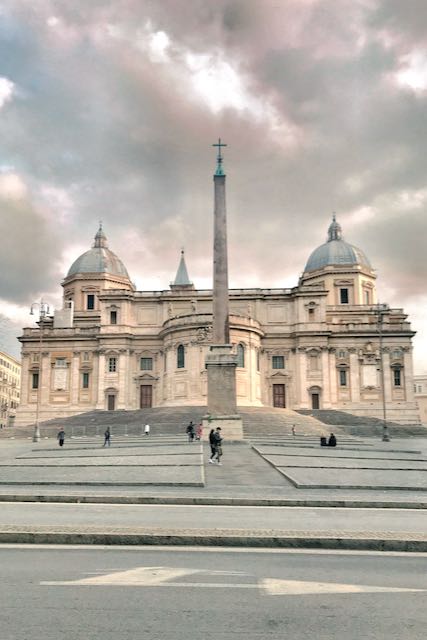 Obelisk at the back of Santa Maria Maggiore.
Obelisk at the back of Santa Maria Maggiore.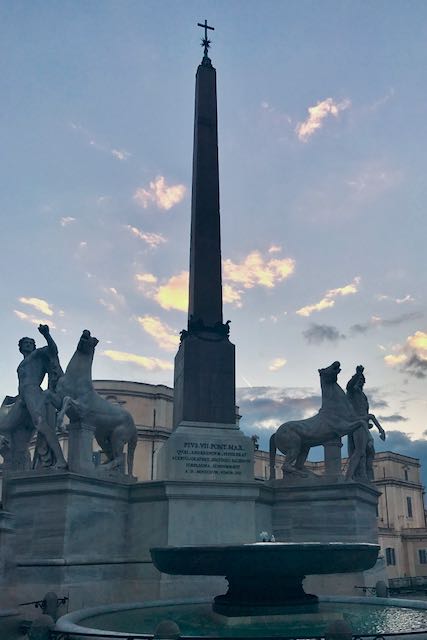 Obelisk as part of a fountain at the Piazza del Quirinale.
Obelisk as part of a fountain at the Piazza del Quirinale.The Mausoleum of Augustus is the largest circular-shaped tomb ever known.
After the pyramids in Egypt, Augustus’ tomb was the largest funerary monument in the world at the time it was built.
Its diameter is about 87 meters / 285 feet.
Today the ruins are about 30 meters / 98 feet high, but we don’t know the exact height of the original structure as the upper portions are long gone.
However, from the descriptions of Strabo, we can surmise that the height of the building may have reached somewhere around 45 meters / 150 feet.
The external wall was and is still about 12 meters /40 feet tall.
Although it may not seem like it, Hadrian's Mausoleum, today Castel Sant'Angelo, is in fact smaller than Augustus' Mausoleum.
Ready to plan your trip?
Book your train
Planning to travel between cities in Italy and other parts of Europe?
Use Trainline to see all the different options available across the different rail companies.
Find your hotel
Find your perfect place to stay in Rome.
Use Booking.com to choose between hotels, guesthouses, and self-catering apartments in neighborhoods throughout the Eternal City.
Buy your TurboPass
Purchase the convenient Turbopass and visit all of Rome's top attractions including the Colosseum, Pantheon, and Vatican.
With one handy pass, it's all included.
Who was buried in the Mausoleum of Augustus?
So who was buried in the Mausoleum of Augustus, besides the obvious, Augustus himself?
The mausoleum was intended as the burial place for Augustus’ family but also for important people close to the emperor, as well as the rest of the Julio-Claudio dynasty.
The dead were usually cremated and their ashes placed in urns.
The three rectangular niches surrounding the inner cylinder housed the ashes of Augustus’ immediate family, including his nephew and son-in-law Marcellus, who died of plague at the age of 19 in 23 BCE, and who was the first to be interred in the tomb.
His epitaph proves that the monument was more or less finished by that time.
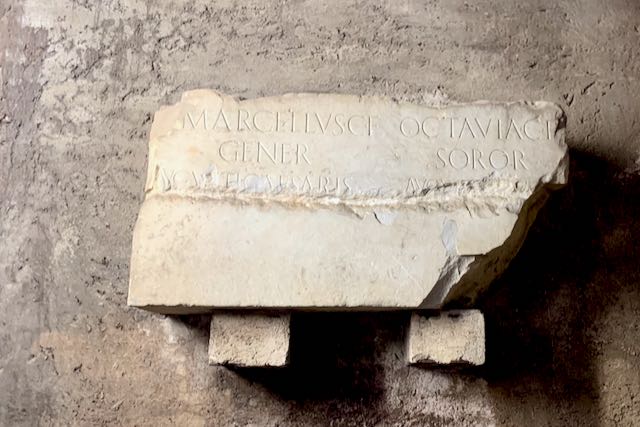 Fragment of an epitaph for Marcellus, the nephew and also son-in-law of Emperor Augustus. He was the first to be buried in the mausoleum.
Fragment of an epitaph for Marcellus, the nephew and also son-in-law of Emperor Augustus. He was the first to be buried in the mausoleum.Augustus' mother Atia and sister Octavia were buried here around 11 or 10 BCE.
Other important people buried here included:
- Livia (Augustus' wife)
- Marcus Agrippa (son-in-law and right-hand man to Augustus)
- Tiberius (Livia's son by her first husband, and 2nd emperor of Rome)
- Drusus (Tiberius' only child)
- Caligula (3rd emperor of Rome)
- Claudius (4th emperor of Rome)
- Agrippina (daughter of Agrippa and Julia, and mother of Caligula) and her husband Germanicus, a prominent general in the Roman Empire
- Britannicus (Son of emperor Claudius)
- Poppea (Nero's wife)
For a short time, the Mausoleum housed the ashes of Vespasian, but his remains were later moved to the (long-gone) tomb of the Flavian family on the Quirinal hill.
Augustus’ daughter Julia, who had mortified her father with her promiscuous behaviour, was excluded from burial in the mausoleum.
The 5th and last member of the Julio-Claudio dynasty, Emperor Nero, was considered unworthy and was also not buried in the mausoleum.
Augustus was buried in his mausoleum in 14 CE.
The last Roman Emperor buried here was Nerva in 98 CE.
In 217 CE, the mausoleum was reopened to host the ashes of Giulia Domna, wife of Emperor Septimius Severus.
She was the last person to be buried in the mausoleum, but soon thereafter, her sister had her ashes moved to Hadrian’s mausoleum.
Restoration of the Mausoleum of Augustus
There have been a few attempts to restore this fragile monument, including one started in 2014 under former Rome mayor Ignazio Marino.
The last restoration project, begun in fall 2016, has finally borne fruit.
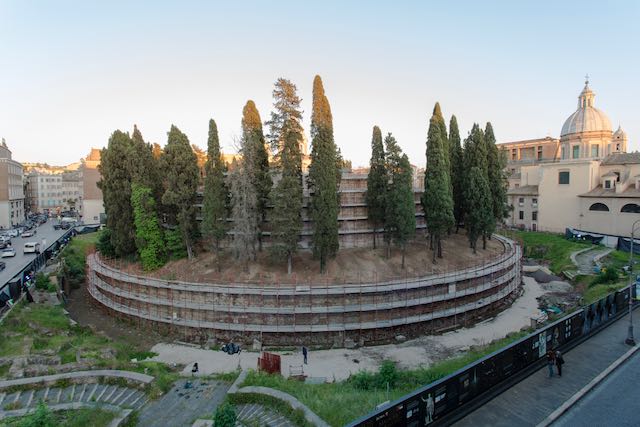 TIMnewsroom - restoration of the Mausoleum of Augustus, via Wikimedia Commons
TIMnewsroom - restoration of the Mausoleum of Augustus, via Wikimedia CommonsThe restoration was financed mostly by Italian telecommunications company TIM who provided more than 6 million Euros towards the project.
An additional 4 million Euros came from the city and Italy's culture ministry.
You can read more details about the restoration on the official site here.
What's on the inside of Augustus' mausoleum?
The Mausoleum of Augustus only recently reopened to the public.
They are working on making it into a full-blown museum but it is still an open construction site.
Suffice to say it's literally a work in progress.
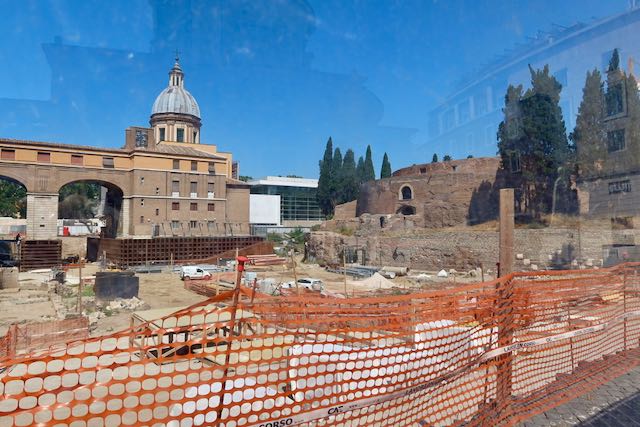 The restoration of the Mausoleum of Augustus is a gargantuan project and it's still ongoing.
The restoration of the Mausoleum of Augustus is a gargantuan project and it's still ongoing.Today when you visit the mausoleum, you will be able to see much of the original inner structure along with the building materials and styles used in Ancient Rome.
Once you get into the inner cylinder, you will see some urn repositories as well as some epitaphs with the names of some of the people buried there.
The perfect 3-day itinerary in Rome
Trying to figure out how to organize your visit to Rome? I've got the perfect 3-day itinerary for first-time visitors (or those who have not been here in a while.) It works for a 2.5 day visit as well.
In my 3-day itinerary, you'll see all the major must-see Rome attractions like the Vatican, Colosseum, Trevi Fountain, Pantheon, Piazza Navona, Spanish Steps, Castel Sant'Angelo, and much more.
And if you have more time, or want suggestions for extra/other things to do, you'll find that there too.
Visit my page with the best 3-day itinerary in Rome for first-timers.
Opening hours
As of early 2025, the mausoleum is currently closed due to ongoing restorations - you can check the status here on the official website.
How to get tickets and what a visit is like
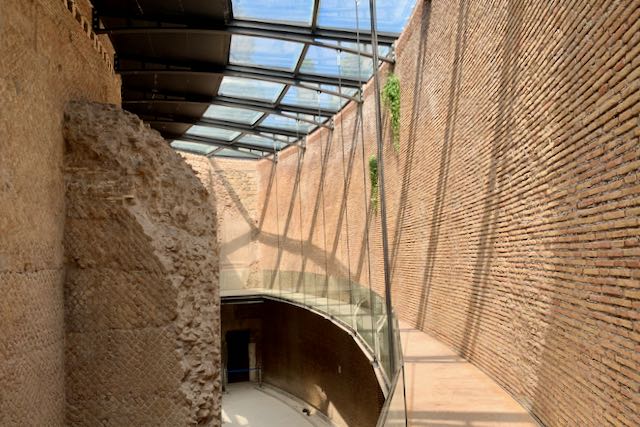 There is a walkway along part of the inside of the mausoleum.
There is a walkway along part of the inside of the mausoleum.Check back for details on entry fees and hours once the renovations are complete.
Bibliography
Penelope - University of Chicago
Mussolini's Rome - Rebuilding the Eternal City, Borden W. Painter, Jr.
Augustus - a novel, John Williams
The Families Who Made Rome, Anthony Majanlahti
Romewise's Top Travel Resources
Ready to book your trip to Rome? Take a look at these helpful links to companies we use and trust:
- Keep your travel spending simple with the Wise card, which removes all the worry about exchange rates and high transaction fees all over the world
- Search for and book your perfect accommodation
- Our complete guide to what to pack for Rome
- The number one travel accessory, a multi-point travel adapter and voltage converter
- Browse a huge range of tours in Rome and beyond
- Experience unique tours and special access to Rome's most popular sights
- Protect yourself with comprehensive travel insurance
Within this post there are some affiliate links for products and services. For more details about our affiliate policy click here.
Get your 100% free Rome trip planner now!
Simply sign-up today for our free newsletter and get the Romewise Quick Start guide to Rome:
We are committed to respecting your data. Click for our Privacy Policy.
Comments? Questions? Suggestions?
Please come over to the private Romewise Facebook group and join in the conversation.
You will often find me there, happy to answer your questions / comments!
You will also meet other Rome lovers and experts, too.
What are you waiting for?
- Romewise Home Page
- What to Do in Rome
- Mausoleum of Augustus

![(Augustus: A Novel (Vintage classics)) [By: Williams, John] [Feb, 2003]](https://m.media-amazon.com/images/I/51Hnj-1LdnL._SL160_.jpg)



